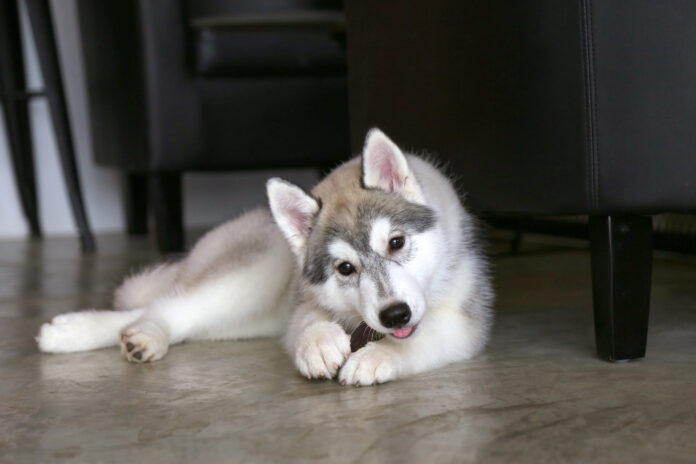Is your pet putting on pounds? Time for expert help

Pet obesity is a huge risk factor and can expose your fur kid to many different illnesses and challenges. It may be time to get some help.
Who can ignore the wide, eager eyes and wagging tail or purr of an adoring pet sending a strong hint that a treat would hit the spot? Pet owners know those looks are hard to resist and treats are a way to reinforce the bond with their animal companions.
Like humans, pets struggle with their weight too
Yet, like humans who may struggle with maintaining a healthy weight, many pets are obese, with an estimated 60% of cats and 56% of dogs classified as being overweight. Giving too many treats adds excess calories and can contribute to a nutritional imbalance in a pet’s diet.
“Nutrition is a cornerstone of animal health. Proper nutrition is critical for overall wellness, disease management and prevention for pets,” said Dana Varble, DVM, CAE, Chief Veterinary Officer at the North American Veterinary Community (NAVC). “With a wide variety of food products on the market along with different philosophies on what’s best for animals, it’s important for pet owners to seek nutritional guidance from the people who truly know their animals’ dietary needs: their veterinary healthcare team.”
/* custom css */
.tdi_15.td-a-rec{
text-align: center;
}.tdi_15 .td-element-style{
z-index: -1;
}.tdi_15.td-a-rec-img{
text-align: left;
}.tdi_15.td-a-rec-img img{
margin: 0 auto 0 0;
}@media (max-width: 767px) {
.tdi_15.td-a-rec-img {
text-align: center;
}
}

Most of your pet’s calories should come from their food, not treats
Kara M. Burns, MS, MEd, LVT, VTS (Nutrition), VTS-H (Internal Medicine, Dentistry), a recognized expert on animal nutrition, who has presented on the topic of animal nutrition to veterinary professionals around the world, stresses that 90% of an animal’s recommended daily energy requirement should come from pet food.
“Snacking on too many treats is bad for pets just like it is for people. When it comes to treats, those products should not exceed more than 10% of an animal’s daily caloric intake,” said Burns. “The credentialed veterinary nurse or technician can help pet owners understand the information on pet food labels and calculate the recommended amount of food versus treats, based on a specific animal’s needs.”
Veterinary nurses can help
Similar to registered nurses in human healthcare, credentialed veterinary nurses/technicians are highly educated professionals who provide a wide range of veterinary care to pets, including nutrition. They have an associate or bachelor’s degree in veterinary technology and have studied anatomy, physiology, pharmacology, anesthesia, etc. Additionally, they are able to pursue 16 areas of specialization, including nutrition, emergency and critical care, anesthesia and analgesia, and more. Those who have achieved a nutrition specialization have completed 4,000 hours work experience in the animal nutrition field, clinical or research. Additionally, they completed 40 continuing education hours related to veterinary nutrition, animal nutrition or nutrition research, managed multiple nutrition cases in more than one species, and passed an arduous specialized exam. The National Association of Veterinary Technicians in America (NAVTA) offers resources for veterinary nurses/technicians seeking specialization certification.
“Credentialed veterinary technicians are dedicated to providing the best care for pets and that can often involve helping pet owners navigate the nutritional needs of their animals – needs that are sometimes overlooked. Nutritional requirements change throughout a pet’s lifetime and can also play an important role in managing medical conditions,” said Allison Flinn, BS, RVT, a Technician Supervisor at VCA All Pet Emergency Center in Evansville, IN, and a certified animal weight coach. “Credentialed technicians have a wealth of knowledge to share with pet owners and we’re eager to help. We can help owners interpret nutrition labels to better understand what they are feeding their pets and we often help owners implement the veterinarian’s recommendations for appropriate dietary changes, supporting them throughout the process.”
Proper nutritional guidance
Credentialed veterinary nurses/technicians can provide important nutritional guidance including:
- Various nutritional needs at each life stage and how much to feed your pet.
- How certain nutrients help to manage a disease or condition.
- Techniques to transition your pet to a new diet and ways to encourage pets to try new foods.
- What to do if the pet does not like their new diet food or has any issues associated with a particular food.
VCA offers a number of articles on its website to help pet owners with questions about their animals’ nutrition.
The NAVC and VCA Animal Hospitals, with support from NAVTA, have teamed up to help pet owners better understand how the many different members of veterinary healthcare teams are highly educated and valued partners in ensuring the health and wellbeing of pets.
/* custom css */
.tdi_16.td-a-rec{
text-align: center;
}.tdi_16 .td-element-style{
z-index: -1;
}.tdi_16.td-a-rec-img{
text-align: left;
}.tdi_16.td-a-rec-img img{
margin: 0 auto 0 0;
}@media (max-width: 767px) {
.tdi_16.td-a-rec-img {
text-align: center;
}
}




